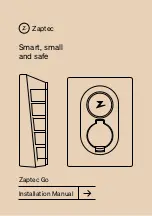
Rutland Furlmatic 910-4 Windcharger Installation & Operation
Doc No: SM-138 Iss. D 16.03.15
17
Marlec Eng Co Ltd
Troubleshooting
In the unlikely event that your Rutland Windcharger should develop a defect,
the turbine should first be tied to prevent the blades from turning to perform
the static tests below. (Follow the procedure described in the Inspection and
Maintenance section). It will be necessary to let it run for the tests to check for
power production.
1.
Read the Electrical Connection
and
Up & Running
sections and be
satisfied that your system complies.
2.
Is there sufficient wind?
The windcharger needs approximately 4-5 knots
wind speed to start charging. The wind speed across the turbine blades may
be greatly reduced in built-up area s compared with weather reports.
3.
Static Tests:
Is the battery in good condition?
Check the voltage and
electrolyte level of each battery.
Check electrical continuity
throughout the
system, especially corrosion and poor connections in cable joins and
connector blocks.
4.
Running Tests:
Check for power output from the Windcharger,
following this procedure:
Set a digital multimeter to DC Amps, scale of between 5 and 10 if possible.
Connect the meter positive (+) probe to the wind generator output positive
cable and the meter negative (-) to the regulator input positive. Provided there
is sufficient wind there should be a current reading. This establishes that
power is being delivered.
Using the same multimeter setting as above measure between the regulator
to b and the b. Provided there is sufficient wind there should be
a current reading. This establishes if power is passing through the regulator.
If both above are unsuccessful set the multimeter to DC Volts. Disconnect the
wind generator from the regulator and connect the meter + to the wind gen +
and the meter – to the wind gen -. Provided there is sufficient wind there
should be a variable voltage reading according to the speed of the wind seen
at the wind turbine. This will establish if the wind generator is able to deliver
power or not.
If tests A and C are successful but test B fails to produce results connect the
wind gen directly to the battery. Set the digital multimeter to DC Amps and
measure power between the wind gen + and the b. If a reading is
measured, providing there is sufficient wind, then the regulator is faulty.
If the wind turbine fails to deliver any current or open circuit V reading
undertake the further tests below.
















































